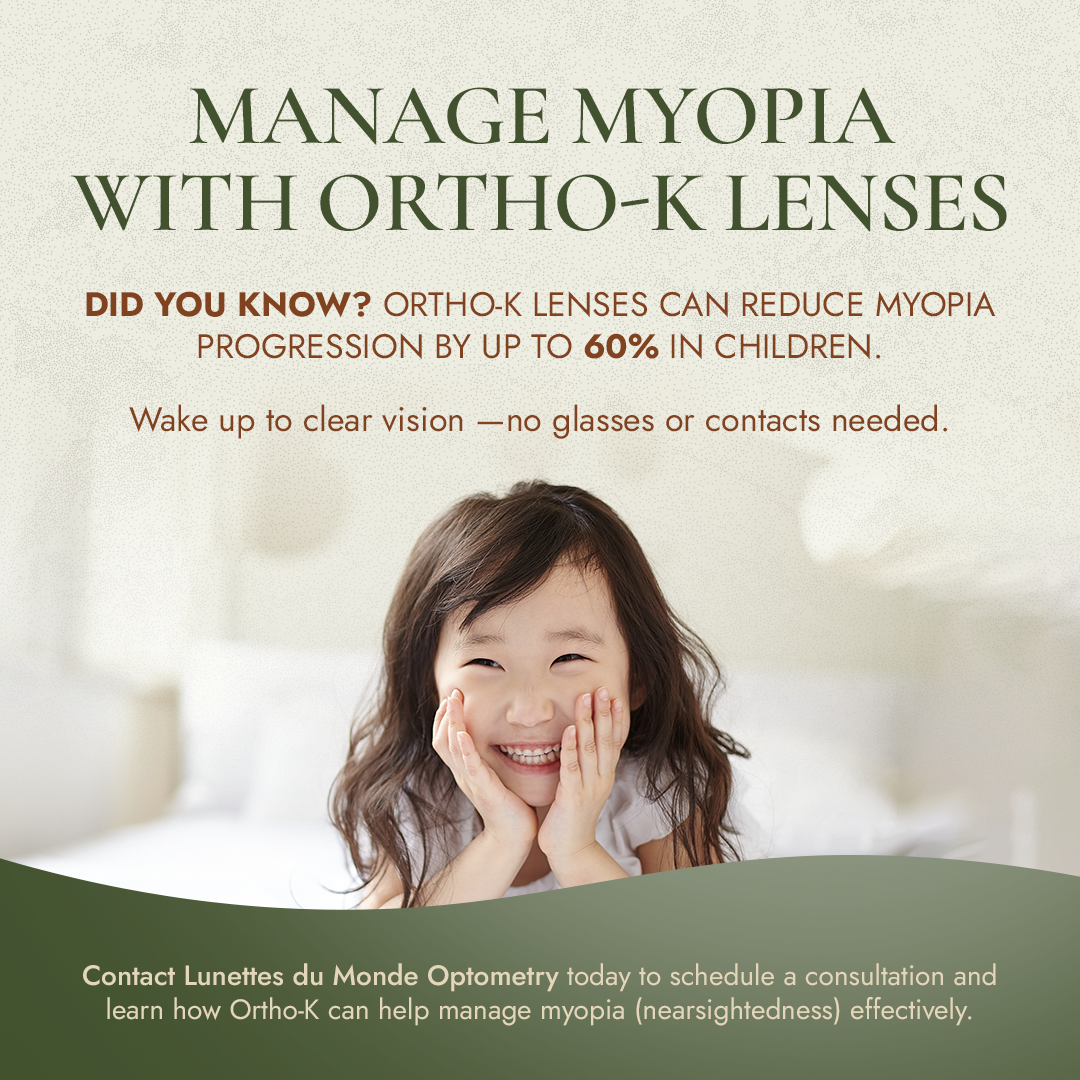
Dry Eye Syndrome, also known as Ocular Surface Disease, occurs when the surface of your eyes fails to maintain the proper balance of water, mucous, and oil in the tear film. This imbalance can lead to symptoms such as burning, itching, watery discharge, redness, general discomfort, and fluctuating vision. Research indicates that while over-the-counter eye drops may provide temporary relief, they are not a long-term solution for managing dry eyes.
Take Control of Your Dry Eye Symptoms Today!
Dry Eye symptoms can significantly affect your quality of life, making daily activities uncomfortable and causing vision instability. Our eye doctors specialize in diagnosing and treating Dry Eye Syndrome.

Dry Eye Treatments
At Lunettes du Monde Optometry, our dry eye evaluation includes a thorough assessment of your medical history, ocular surface, eyelid glands, and tears to determine the cause of your symptoms. Tears have three layers—mucous, aqueous, and lipid. Dry Eye Disease can result from both aqueous deficiency and evaporative issues.

Meibomian glands produce oily lubricants to prevent tear film evaporation. When these glands malfunction, a condition known as Meibomian Gland Dysfunction (MGD), the oils harden and block the glands, preventing essential oils from reaching the eye's surface. This can lead to infections like styes and, in many cases, gland failure. Studies show that MGD is present in 86% of individuals with dry eye disease.
As part of your evaluation at Lunettes du Monde Optometry, we employ infrared meibography to grade and assess the severity of MGD, guiding us in determining the most effective treatment plan for you.
Here are a few treatment options that may be discussed at your visit:

ThermaeyePlus® IPL (Intense Pulse Light) technology penetrates deeply into the periocular area. The micro pulsed light effectively treats rosacea, bacteria, and telangiectasia, "choking" the blood vessels to halt the cascading effect of chronic inflammation, providing relief. This advanced European technology with adaptive cooling ensures a comfortable, painless treatment. Smart energy and intuitive nomograms, combined with skin-specific filters, enable personalized treatments tailored to the severity of inflammation and Meibomian Gland Dysfunction.


Mibo® Thermoflo This treats dry eyes by massaging the margins of the eyelids. It uses controlled heat to unclog the meibomian glands to restore a healthier, more balanced tear film.

Contact Lenses Custom designed scleral contact lenses can help provide moisture and hydration to your eyes while providing excellent vision.

Antibiotics Topical antibiotics, such as eye drops or ointments, help reduce bacterial load and inflammation, improving symptoms and overall eye health. In some cases, oral antibiotics may be prescribed to manage chronic inflammation and support long-term relief.


Anti-inflammatory and Immunomodulator MedicationsThese therapies help reduce inflammation, improve tear production, and provide relief from the discomfort and vision issues associated with dry eyes.

Punctal Plugs sometimes when there isn't enough total tear volume in the eyes, our doctors will insert dissolvable punctal plugs into a specific area in your eyelids (tear ducts) to prevent the tears that are there from draining from the eyes too fast.
Amniotic Membrane Lenses is a cutting-edge treatment for advanced dry eye cases. It promotes healing and reduces inflammation by providing a protective barrier and releasing essential growth factors. This therapy is particularly effective for patients who have not responded to conventional treatments, offering significant relief and improved ocular surface health.

Warm Compresses and Eyelid Cleansing Applying a warm compress to the eyes helps to unblock meibomian glands, improving oil flow and stabilizing the tear film. Regular eyelid cleansing removes debris and reduces bacterial load, further alleviating symptoms. These simple yet effective methods can provide significant relief and are often recommended as part of a comprehensive dry eye management plan.
Other Treatment Options
Blink regularly when using digital devices or computer screens for extended periods.
Ensure adequate humidity in your work and home environments.
Wear sunglasses, especially wraparound styles, to reduce sun and wind exposure outdoors.
Take supplements containing Omega-3 and essential fatty acids, which may alleviate dry eye symptoms.
Stay hydrated by drinking enough water daily.
Check if any of your prescription medications have dry eye as a side effect, and consult your doctor about possible alternatives. Over-the-counter antihistamines are common culprits.

Dry Eye Treatments
Over-the-counter eye drops can offer short-term relief. Here are some tips for choosing the right type:
Low viscosity: These watery artificial tears provide quick relief without much blurring of vision, but their effects may be brief.
High viscosity: These gel-like drops offer longer-lasting lubrication but can cause significant blurring of vision for a few minutes. Therefore, high-viscosity artificial tears are best used at bedtime.

Nutrition
Nutritional supplements can play a vital role in managing dry eye disease. Omega-3 fatty acids, commonly found in fish oil, have been shown to reduce inflammation and improve tear quality. Additionally, supplements containing vitamins A, C, and E, as well as minerals like zinc, support overall eye health and tear production. Incorporating these nutrients into your diet or through supplements can provide significant relief for dry eye symptoms.





